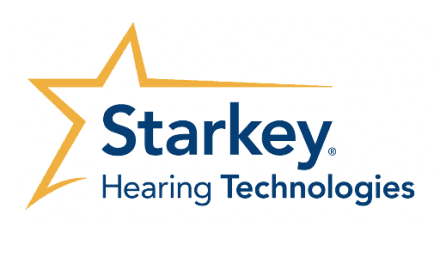The American Academy of Audiology (AAA) has published a list of clinical recommendations for COVID-19 based on advice from the Centers for Disease Control and Prevention (CDC). The below information was published on AAA’s website March 16, 2020.
COVID-19 and Our Audiology Practices
The best recommendation for all practices is to follow the CDC recommendations. You will want to access the CDC website on an ongoing manner to have the latest information. This is a changing situation and you will want to be up-to-date to protect your patients, your staff, yourself, and your families.
You also will want to monitor state and local recommendations that may impact your practice.
Large Health Care System
If you are part of a larger health system, the recommendations will be clear and will come from the health system. In large health systems, audiologists may have an alternate role depending on the state of emergency in that area (i.e., may be enlisted to answer phones, etc.).
Private Practice
If you are in a private practice, it may be less clear what steps you may want or need to take. The recommendations below are meant to assist you in this situation. Please keep in mind that this is a changing situation in our country and although these recommendations are appropriate today (March 16, 2020), things may have (will have) changed by the time you are reading these recommendations and you need to continually update your procedures based on CDC recommendations.
Governing Bodies
If your local governing bodies require that you need to suspend business or if you have decided to suspend your business, you will want to make sure your patients can reach you. On your website and through email communication you can let them know how they can best reach you. In this way you can continue these relationships during this time and at a minimum provide device trouble shooting advice remotely.
Helpful Tips
Many of our industry partners provide the capability of making hearing aid response and programming adjustments remotely. If you don’t already do this, you may want to implement this type of virtual care at this time. Although audiologists cannot receive payment from Medicare for telehealth services at this time, you can bill appropriately and receive out-of-pocket payment for these services as you would typically.
If your practice is open at this time, you will want to communicate to patients through your website and through electronic communications your process for disinfecting the clinic environment and for engaging with patients (e.g. not shaking hands in greeting, having hand sanitizer available, etc.).
For many individuals, they will feel more comfortable knowing what procedures are in place. See the CDC guidance for details on sterilization, disinfecting, etc.
Minimize Contact and Disinfect
Many clinics who are able are leaving the door to the clinic open, so the doorknob is one less surface to touch. They are not having individuals sign-in so community pens are not being touched. Reducing the number of surfaces that need to be touched is a good goal. It is reasonable to encourage patients to use hand sanitizer when they enter the clinic space for everyone’s safety.
Do not shake hands in greeting and minimize physical contact in general. You will want to wash your hands frequently which is already an expected practice in a health care setting, but you will want to be even more vigilant. Do not touch your face; this is a primary way to avoid exposing yourself to anything that is on your hands (this is always a good practice but one we want to be especially aware of in the current situation).
You will want to disinfect all surfaces including chairs, tables, counters, and door handles between patient visits. Throughout the day, wipe down community spaces with disinfectant (e.g., door handles to the restroom, keyboards, etc.). Make sure you wear gloves when disinfecting, these agents should not touch your skin. Review the CDC recommendations for cleaning.
Keep in mind, the current CDC recommendation is to limit human contact as much as possible. Therefore, all non-essential appointments should be postponed. Each of you will need to work within your own clinic environments to determine who these individuals are and how they should be managed—just keep in mind that the overarching goal is to limit contact.
Conduct Phone Screenings
You may have patients who are not taking this public health threat seriously, but we need to insist they follow recommendations coming from the CDC. Patients should be screened through telephone before scheduling to come.
The following triage can be used when speaking to patients on the phone:
- Determine if they truly need to come into the clinic in person or if their issue can be handled virtually.
- Focus on supporting current patients and encourage new patients who do not have an emergent situation to access your clinic later in the year (remember, the current goal is to reduce human contact as much as possible through social distancing so if a patient does not need to be seen in person, they should not come into the clinic at this time.
- Ask the following questions of anyone wanting to be seen in person to determine if it is safe for them to come into the clinic at this time.
- “Are you having fever, cough, or shortness of breath?” If answer is “yes,” this individual should contact their primary-care physician (PCP) by phone immediately.
- “Have you traveled to China, Japan, South Korea, Italy, Iran, France, Germany, or Spain in the last two weeks?” If answer is “yes,” this individual should not come into the clinic at this time.
- “Have you been in contact with someone diagnosed with Coronavirus (COVID 19)?” If answer is “yes,” this person should not come into the clinic at this time.
If the answer is yes to any of these questions, the individual should not be scheduled and should be referred to contact their PCP by phone for further instructions. It is just as important that you screen yourself and your staff with these same questions. If the answer is “yes” do not report to work and do not interact with staff or patients.
Patients who pass this screening and must come in to see you in person, should be asked to be accompanied by no more than one individual and when possible should come unaccompanied. Again, this is one more way to limit human contact.
Offer Drive-Through Service
You may want to consider “drive through” device support. If you are in a location that would be conducive for someone in your office to meet a patient at their car, the staff member can have a tray (covered with a sheet that can be disposed of) that the person deposits the hearing aid (or other device) onto from the car. The hearing aid can be cleaned/restored to function and then delivered back to the car. This can minimize patients encountering each other in the waiting room and coming in contact with many different staff members.
Minimize Waiting Room Time
If you are in a single person practice, you may want to schedule any in-person visits in a way to minimize patients spending any time in the waiting room or interacting with other patients. Remember to disinfect the seating and common surfaces in the waiting area.
Be Available
Hearing and communication are essential in a time of emergency. Individuals need to access news reports from television and Internet. In a time when people are practicing social distancing, they need to be able to communicate virtually via phone and other virtual platforms with loved ones. Hearing plays a central role in many of these communications so even if your practice is not physically open at this time, your patients will be very grateful to be able to reach you for advice.
If you care for individuals with balance challenges, this can be a very scary time if they are having difficulties and don’t feel that they can safely access health-care institutions. Again, being available to consult virtually will help these individuals navigate what course of action is in their best interests.
Support Each Other
We also acknowledge that for our members in their own practices, this is a time of financial insecurity with the need to cancel appointments or with patients choosing not to pursue assistance with their hearing issues currently.
You may be an individual in a high-risk group and may feel you cannot see patients at this time. In addition, we know that some of you are facing child-care concerns, as schools and day care centers close under the recommendation of state and local governments. You may not be able to support your practice in person if you need to be home with young children. Some of the virtual strategies above may help.
This is a time when audiologists may be able to support each other by a larger practice offering to support patients who are typically seen at a one-person practice who cannot remain open at this time. This is a time for creative solutions to stay safe and to maintain support for our patients who need to continue to communicate effectively.
Sincerely,
Your Academy Board of Directors
Source: AAA





